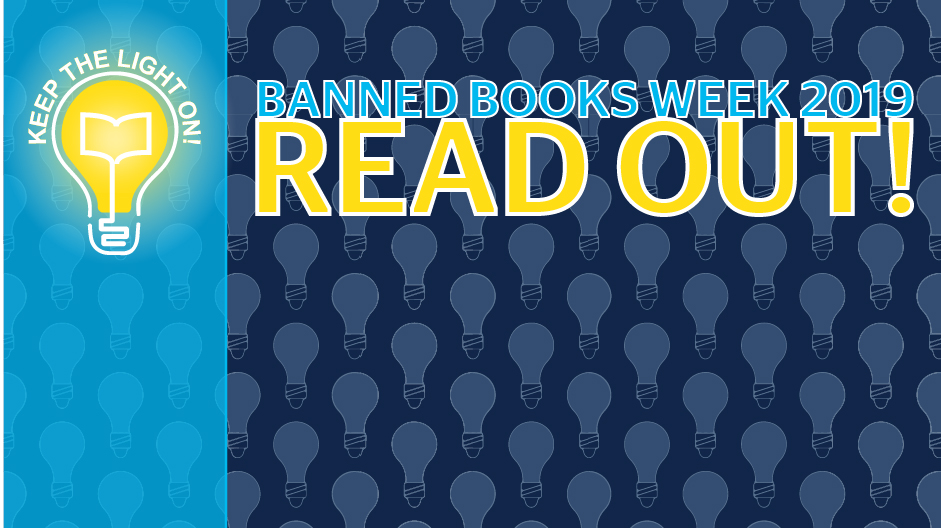Banned Books Week, taking place September 22 through 28, 2019, was originally founded 37 years ago by Judith Krug, a political activist. Concerned by the threat of censorship and the number of books banned in the early 1980s, Krug believed that readers should be empowered to access and have the freedom to form their own opinions about all books. Today, Banned Books Week is a coalition of international organizations committed to raising awareness about the right to read.
The right to read and access information is a freedom that many take for granted. However, there are instances when this freedom is threatened and, in some cases, taken away. Banned Books Week is a time to reflect on the epistemic violence of censorship and the importance of the opportunity to access ideas and narratives, even controversial ones. Imagine a world without Harper Lee’s To Kill a Mockingbird, one of the most widely read and beloved works of American literature. What if Anne Frank’s story had gone untold due to the banning of The Diary of a Young Girl? And many couldn't picture their teenage years without the opportunity to relate to the angsty protagonist of J.D. Salinger’s The Catcher in the Rye. Although those are historical examples of banned books, the American Library Association (ALA) reports that 483 books were challenged or banned in 2018 in the United States. This is a dramatic rise from 2017, when 354 books were challenged or banned.
You may be wondering: How are books banned in the first place? You may also be surprised that this still happens in 21st-century America. Firstly, it is important to distinguish challenged books from banned books. The process of book banning starts with what is called a challenge. When concerned individuals are opposed to the availability of certain books in a library or school, they present a complaint to the library administration or school board, calling for the removal of the materials deemed offensive. These challenges are taken under review by the library’s or school’s administration. If the verdict requires the challenged book to be relocated or removed from public access entirely, then the book is considered banned.
Each year, the ALA releases a list of the top ten most banned books, but in 2018 the list contained 11 titles, as the last two were tied. The most challenged, banned, and relocated book in 2018 was George by Alex Gino, due to its “corrupting” content involving a transgender character. In fact, at least half of the books on the list were banned due to the inclusion of LGBTQIA+ content. The tenth and eleventh books on the list—This Day in June by Gayle E. Pitman and Two Boys Kissing by David Leviathan—were burned by a religious activist in Iowa. This incident confirms that Banned Books Week is instrumental in allowing the diverse body of readers the opportunity to advocate for the freedom to read and think about issues that others seek to silence. For a list of all 11 banned books and the reasons for banning them, visit the Top Ten Most Challenged Books.
Banned Books Week at University of Miami Libraries
The University of Miami libraries (UML) will be hosting a week of activities and advocacy, including a Read-Out of previously banned or challenged works, so be sure join us in celebrating free speech and the right to read. Starting September 22, look around the library for books that have been challenged or banned—you may be surprised by some of the titles that you'll find. Also, UM's Sigma Tau Delta International English Honor Society will be hosting a Banned Books Week event on Friday, September 27 from 5 to 7 p.m. The event will take place in 314 Ballroom West at the Shalala Student Center.
Check out our Guide to Banned Books Week to learn more about what happens when a book is challenged.
Exercise your right to read—check out a banned book from UML!

